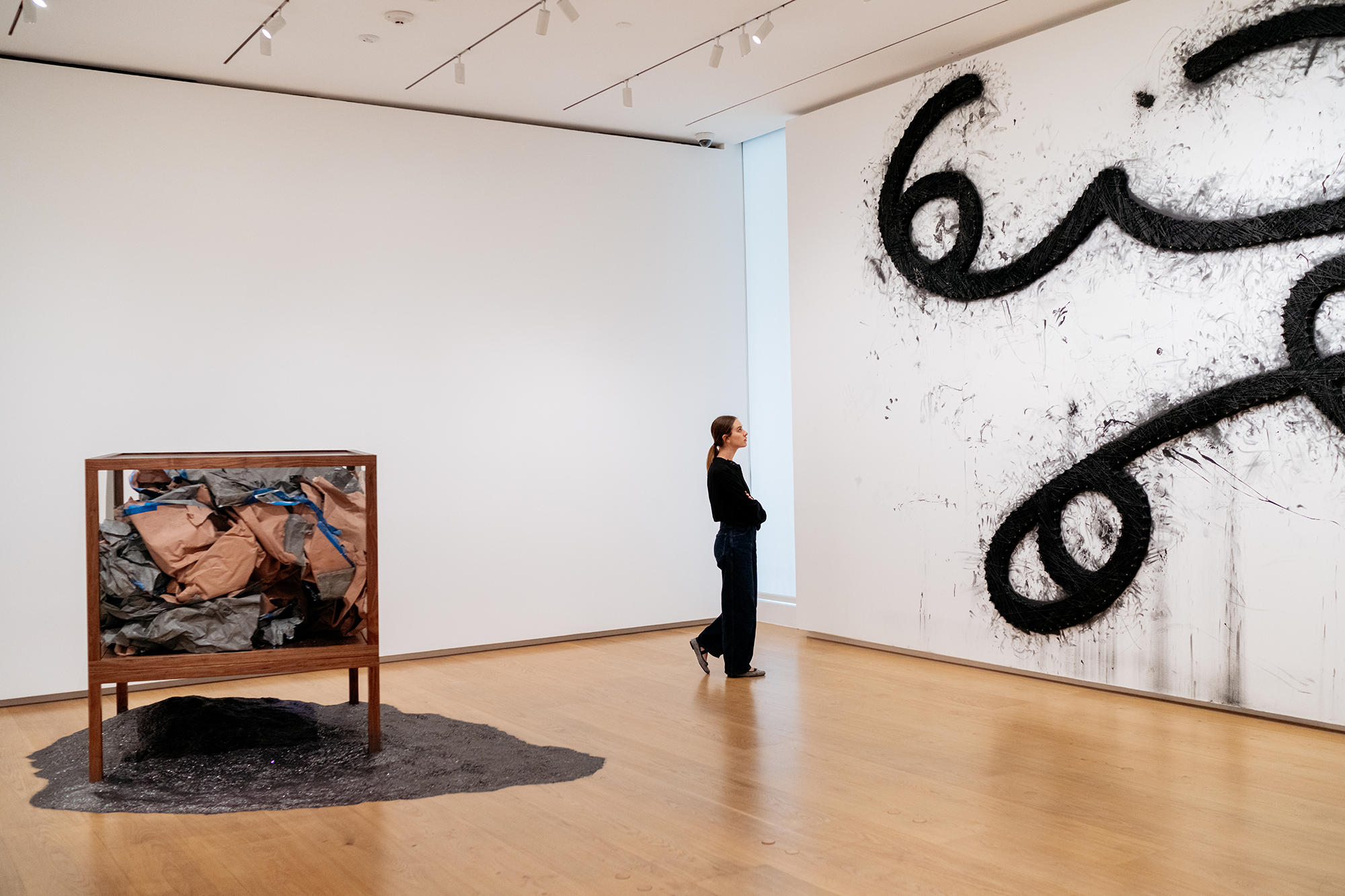The boundaries of drawing dissolve into spatial poetry in Houston's most ambitious exhibition of the season.
By Fine Art Editorial Staff
The Menil Drawing Institute’s latest exhibition, What drawing can be: four responses, emerges as a bold manifesto of reinvention. Opened on March 21 and running through August 10, 2025, this exhibition transcends the conventional confines of drawing, expanding its possibilities through material experimentation, spatial intervention, and conceptual rigor.
Curated by Edouard Kopp, Chief Curator of the Menil Drawing Institute, and Kelly Montana, Associate Curator, the exhibition presents site-specific installations by four groundbreaking contemporary artists: Constantin Luser, Tony Lewis, Jillian Conrad, and Teresita Fernández. Each artist was invited to respond to the prompt “What drawing can be,” pushing the boundaries of the medium into the realms of sculpture, architecture, and phenomenological experience. The result is a dynamic, multifaceted exploration that redefines drawing as a dynamic, evolving language capable of profound material poetry.
"The Menil Drawing Institute was established in 2008 in recognition of drawing's crucial role in modern and contemporary artistic culture. We are proud to bring together four talented, yet very different artists to create installations based around their interpretations of the medium and its infinite possibilities," observes Kopp. "These artists aren't merely pushing boundaries—they are dissolving them entirely, revealing the infinite potential of the medium."
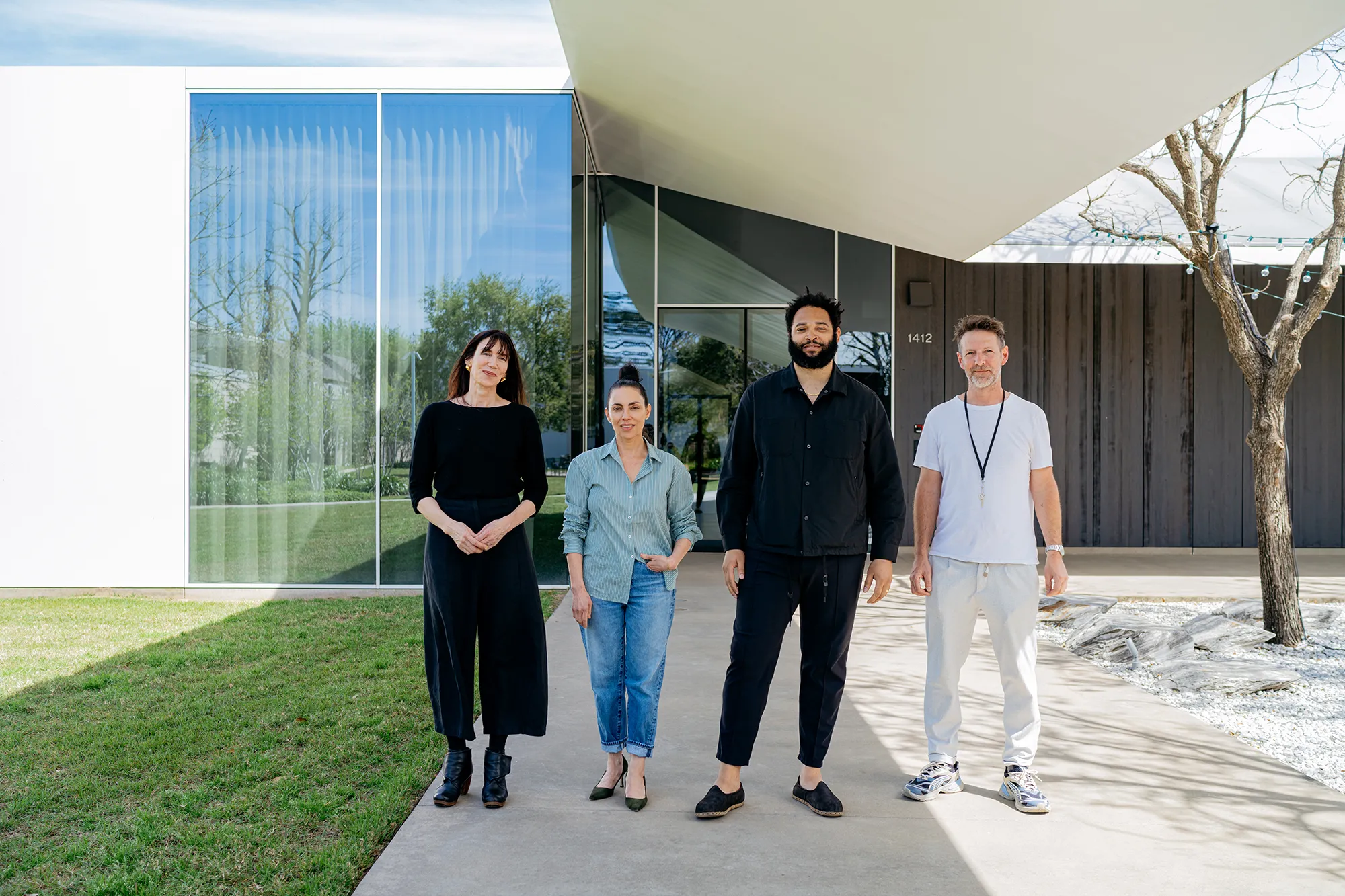
Austrian artist Constantin Luser reimagines drawing through his kinetic, three-dimensional “spatial drawings.” Constructed from interwoven brass wires, these floating sculptures cast intricate shadow networks across the walls, transforming the gallery space into a living, breathing composition of light and line. Luser's work evokes the legacies of artists like Alexander Calder and Sol LeWitt, while introducing a new dimension to the practice—one that exists beyond the static confines of paper.
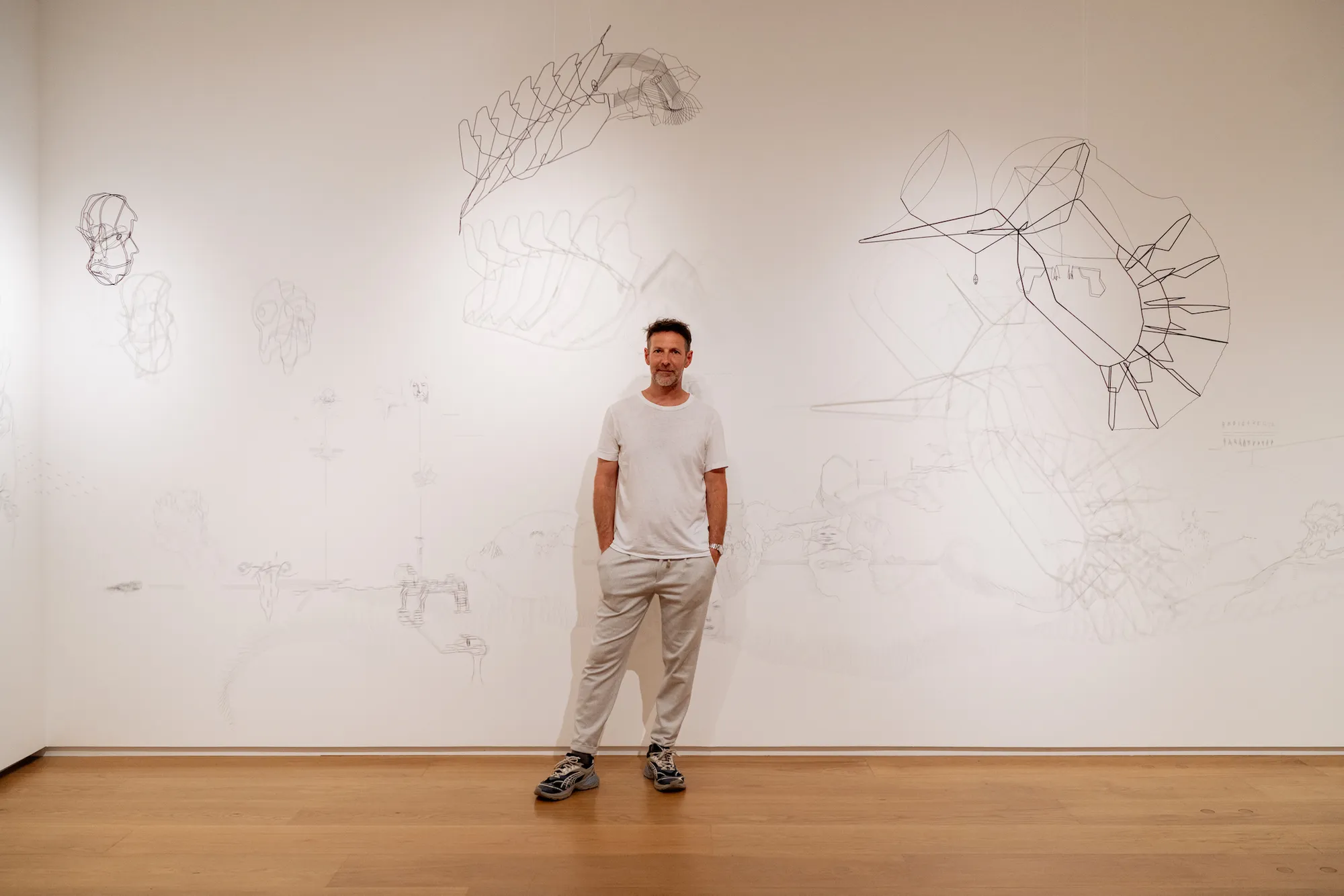
In a striking contrast, Tony Lewis explores drawing through a visceral engagement with materiality. His monumental graphite works—some weighing up to fifty pounds—challenge both scale and form, with one piece displayed atop a bed of crushed graphite in a vitrine. Lewis’s work merges drawing with sculpture, constructing intricate drawings from screws and nylon strings, creating a tension between the delicacy of line and the raw presence of physical matter. In doing so, he expands the very definition of drawing, bringing it off the page and into the physical world.

Houston-based artist Jillian Conrad, known for her sculptural practice, offers a poetic intervention with her installation Cetus. Recreating the constellation Cetus—the Sea Monster—Conrad employs pliable metals, jewelry chains, and hand-blown glass orbs to depict stars. In this subtle yet profound reimagining, Conrad connects the celestial to the intimate, positioning constellations as some of humanity's earliest drawings while exploring themes of nature and the alchemy of creation.
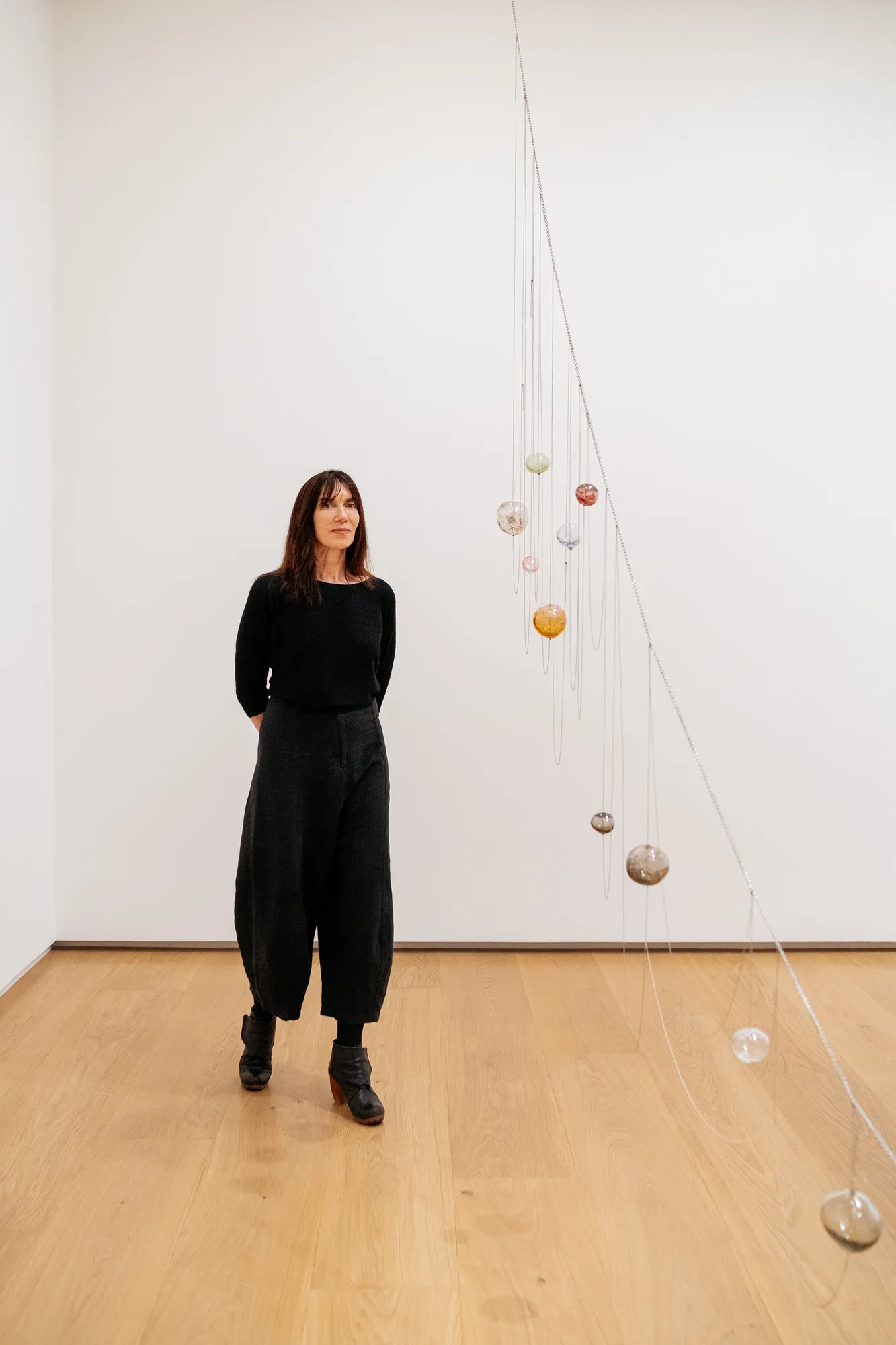
Teresita Fernández’s installation Scorched Earth (Lament) provides the exhibition’s most politically charged response. Drawing on themes of landscape and colonialism, Fernández uses sculptural charcoal to evoke a cross-section of the Earth, from its molten core to its outermost topography. The work interrogates the visual language of landscapes and maps, offering a critical examination of the historical traumas embedded in the way we depict and inhabit the land. Through this immersive installation, Fernández invites viewers to reconsider not just the form of drawing, but its potential to tell stories of power, erasure, and resistance.
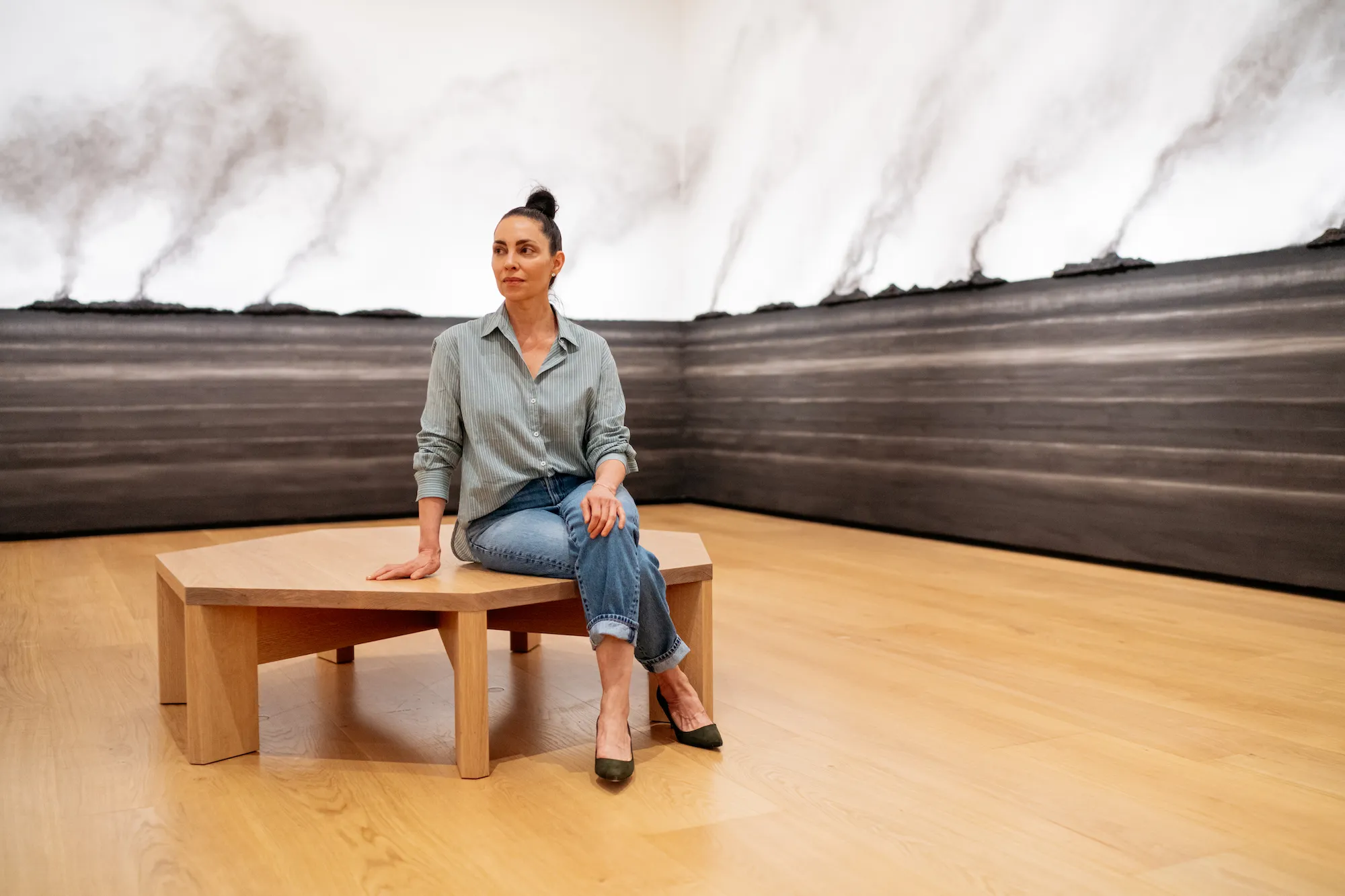
"Rejecting conventional limitations of material, scale, and permanence, the four artists in this exhibition make the case for the continuing relevance, agility, and vitality of drawing, and how it remains a generative area of investigation. It's been a joy to work with these artists for What drawing can be and to present each installation, though vastly different, in conversation with one another," says Montana.
The exhibition is part of the Menil Drawing Institute’s ongoing commitment to expanding the role of drawing in contemporary art. Established in 2008, the Institute has long been dedicated to elevating drawing’s place in the artistic conversation, while questioning its boundaries. Through What drawing can be: four responses, the Menil presents not just a question, but a chorus of radical answers, demonstrating the boundless potential of drawing as both a medium and a conceptual tool.
